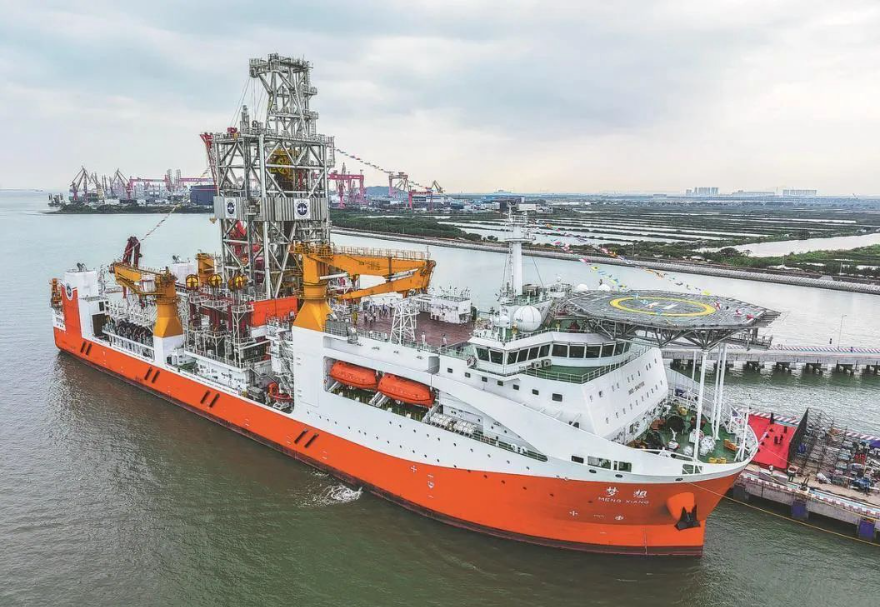
On November 17, 2024, the deep-sea drilling vessel "Mengxiang" (Dream) was officially commissioned in Nansha, Guangzhou. Designed for scientifc drilling and research in the deep ocean, its launch marks a major step forward in China’s capabilities in deep-sea access, exploration, and development. It has an endurance of 15,000 nautical miles and can operate continuously at sea for 120 days, making it the only drilling ship in the world capable of operating at depths of up to 11,000 meters.
The Jinwan Offshore Wind Farm in Zhuhai is currently the largest of its kind in the Guangdong–Hong Kong–Macao Greater Bay Area. Located in waters with depths ranging from 12 to 21 meters, the farm has a total installed capacity of 300 megawatts, consisting of 55 wind turbines each with a capacity of 5.5 megawatts. The project also includes a 220-kilovolt offshore substation and an onshore control center.
On January 3, 2025, the first marine ranch cage manufactured in Zhongshan—"Lingding Ranch No. 2"—was safely towed out of the port, and proceeded to the waters near Aizhou Island in the Pearl River Estuary. It is used for breeding species such as mi-iuy croaker, amberjack, yellowfin tuna, and golden pompano.
The LNG Peak-Shaving and Emergency Gas Supply Station in Guangzhou’s Nansha is equipped with two LNG storage tanks, each with a capacity of 160,000 cubic meters. It has an annual LNG turnover exceeding one million tons, extending Guangzhou’s emergency natural gas supply capacity to more than 10 days.
In June 2023, China’s first megawatt-scale floating wave energy generation device, "Nankun", began trial operation. The platform converts wave energy from the deep sea into green electricity and can generate up to 24,000 kWh per day under full load, enough to supply around 3,500 households.
Guangzhou has taken a leading role in the exploration and trial production of natural gas hydrates in China’s waters. The Guangzhou Marine Geological Survey has conducted the first and second trial production in Chinese waters in 2017 and 2020.